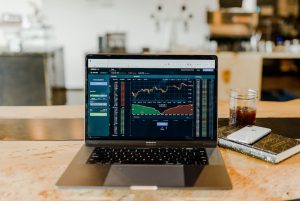Forex carry trades have long been used by investors as a way to profit from interest rate differentials between currencies. In a carry trade, an investor borrows money in a currency with a low interest rate and then uses that money to invest in a currency with a higher interest rate. The goal is to earn a profit from the difference in interest rates, as well as any potential currency appreciation.
In 2016, there are several forex carry trades that are currently popular among investors. These trades are driven by various factors, including central bank policies, economic conditions, and geopolitical events.
One popular carry trade in 2016 is the Australian dollar/yen trade. This involves borrowing in the Japanese yen, which has a very low interest rate, and investing in the Australian dollar, which has a higher interest rate. The Reserve Bank of Australia has kept interest rates relatively high in order to combat inflation, while the Bank of Japan has maintained its policy of negative interest rates in an effort to stimulate the economy. As a result, the interest rate differential between these two currencies is quite large, making this trade attractive to investors.
Another popular carry trade in 2016 is the euro/yen trade. This involves borrowing in the Japanese yen and investing in the euro, which also has a higher interest rate. The European Central Bank has kept interest rates low in an effort to stimulate the economy, while the Bank of Japan has continued its policy of negative interest rates. This has created a large interest rate differential between these two currencies, making the euro/yen carry trade attractive to investors.
The New Zealand dollar/yen carry trade is also popular in 2016. This trade involves borrowing in the Japanese yen and investing in the New Zealand dollar, which has a higher interest rate. The Reserve Bank of New Zealand has been raising interest rates in order to combat inflation, while the Bank of Japan has maintained its policy of negative interest rates. This has created a large interest rate differential between these two currencies, making the New Zealand dollar/yen carry trade attractive to investors.
Finally, the US dollar/Swiss franc carry trade is also popular in 2016. This trade involves borrowing in Swiss francs, which have very low interest rates, and investing in US dollars, which have a higher interest rate. The US Federal Reserve has been raising interest rates in order to tighten monetary policy, while the Swiss National Bank has maintained its policy of negative interest rates. This has created a large interest rate differential between these two currencies, making the US dollar/Swiss franc carry trade attractive to investors.
It is important to note that carry trades are not without risk. The value of currencies can fluctuate rapidly, and unexpected events can cause interest rates to change quickly. Additionally, leverage is often used in carry trades, which can amplify both profits and losses. Investors should carefully consider their risk tolerance and investment objectives before engaging in carry trades.
In conclusion, forex carry trades continue to be popular among investors in 2016. The Australian dollar/yen, euro/yen, New Zealand dollar/yen, and US dollar/Swiss franc trades are all currently attracting attention from investors looking to profit from interest rate differentials between currencies. However, investors should be aware of the risks involved in carry trades and should carefully consider their investment objectives before engaging in these trades.





